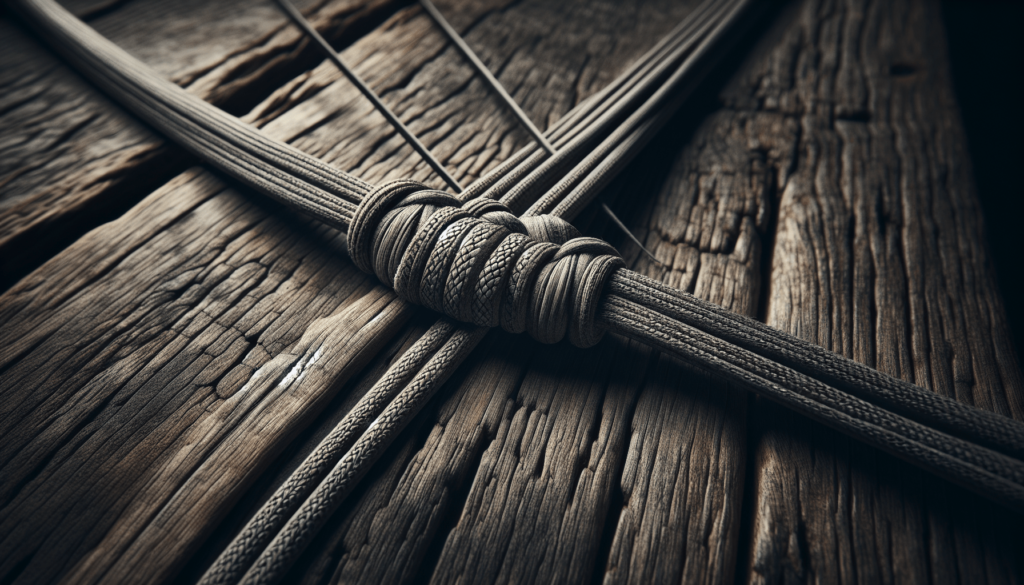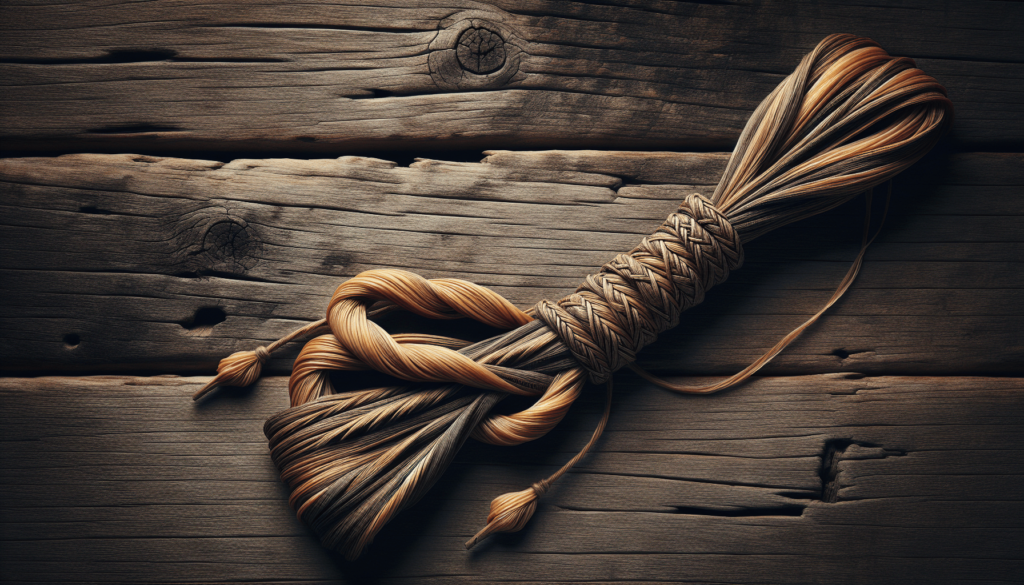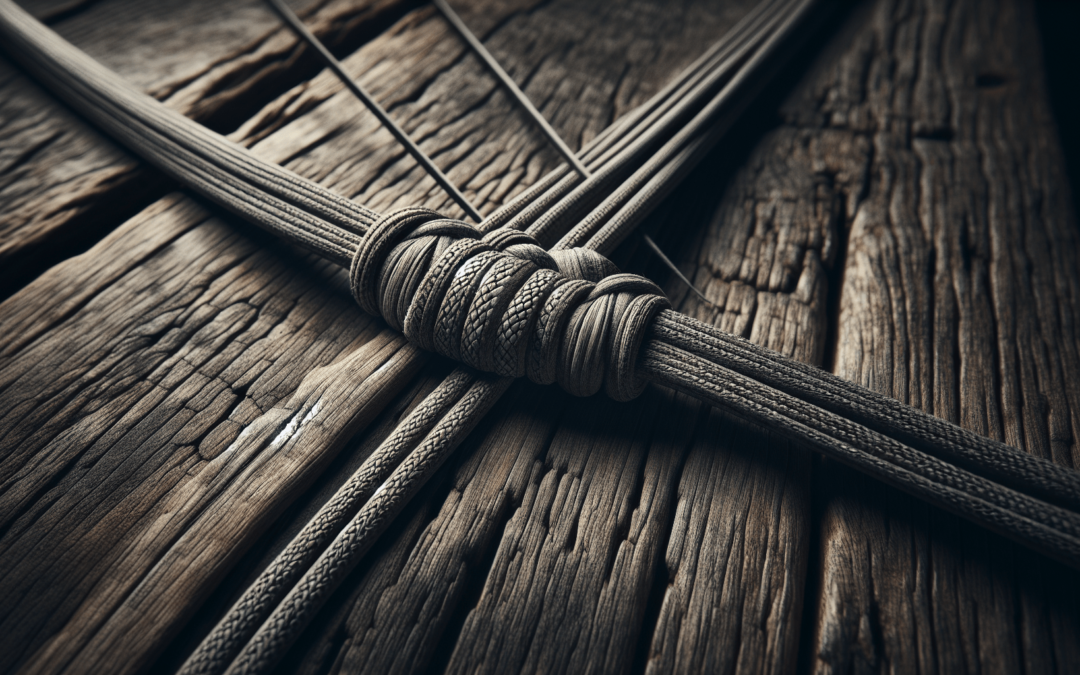Greetings! Dive into the fascinating world of traditional craftsmanship where nature’s materials reign supreme. In “Using Animal Tendons For Bowstrings And Cordage,” you’ll discover how ancient practices meet modern ingenuity. This article illuminates the process of transforming animal tendons into durable bowstrings and versatile cordage, revealing secrets passed down through generations. Whether you’re a history buff, an aspiring archer, or simply curious about age-old techniques, you’re bound to find these methods both enchanting and practical. Enjoy this journey into the past where innovation was born from the simplest resources around you. Have you ever wondered how early humans managed to create reliable and functional tools and weapons with the limited resources available to them? Among the many incredible innovations of our ancestors, the use of animal tendons in crafting bowstrings and cordage is a fascinating example of human ingenuity and adaptability.
Introduction to Animal Tendons in History
Animal tendons have been used for millennia as a crucial material in tool and weapon making. They served early humans well due to their remarkable strength, flexibility, and durability. Whether you are an enthusiast of historical techniques, a survivalist, or someone fascinated by ancestral craftsmanship, understanding how to use animal tendons can be an enriching experience.
Why Use Animal Tendons?
Animal tendons provide several advantages over other materials. They are not only naturally strong and lightweight but also relatively easy to source if you have access to animals. Additionally, they can be processed and preserved for long-term use.
Collecting Animal Tendons
Before you can use animal tendons, you need to know how to properly collect and prepare them. Here’s a detailed guide to help you through the process.
Types of Animals
The types of animals commonly used for tendons include deer, elk, moose, and other large game. Smaller animals like rabbits and squirrels also provide usable tendons but on a smaller scale.
Table: Common Animals and Their Tendons
| Animal | Usable Tendons |
|---|---|
| Deer | Leg tendons, backstrap tendons |
| Elk | Leg tendons, backstrap tendons |
| Moose | Leg tendons, backstrap tendons |
| Rabbit | Leg tendons |
| Squirrel | Leg tendons |
Harvesting Tendons
Harvesting tendons from hunted or harvested animals is a skill that requires some practice.
- Locate the Tendons: Tendons are generally found in the legs and along the spine (backstraps).
- Cut Carefully: Use a sharp knife to carefully cut through the meat, avoiding damaging the tendons.
- Detach Gently: Once exposed, work the tendons free gently to maintain their length and integrity.
Cleaning and Drying
Clean the tendons by removing any attached meat or fat. Drying the tendons helps in their preservation and makes them easier to process.
- Cleaning: Rinse the tendons with water and scrape off remaining tissue.
- Drying: Hang the tendons in a cool, dry place. Avoid direct sunlight which can cause them to become too brittle.

Preparing the Tendons
Once the tendons are harvested and dried, the next step is preparing them for use in crafting bowstrings and cordage.
Splitting Tendons
Dried tendons need to be split into usable fibers. This involves separating the larger tendons into smaller, more manageable fibers.
- Soaking: Rehydrate the dried tendons by soaking them in water until they become pliable.
- Splitting: Use a tool or your fingers to split the tendons along their natural grain. Continue splitting until you have the desired thickness of fibers.
Twisting Fibers
Twisting the fibers tightly will help create strong and durable strings or cords.
- Pairing Strands: Pair the fibers and twist them together while pulling tightly.
- Adding More Strands: Continue twisting and adding more strands as needed for desired thickness.
Making Bowstrings from Tendons
One of the most common uses of tendons in historical tools is in the creation of bowstrings. Here’s how you can transform animal tendons into reliable bowstrings.
Benefits of Tendon Bowstrings
Tendon bowstrings offer a combination of flexibility and strength. They are capable of withstanding high tension, which is crucial for effective bow performance.
Step-by-Step Guide
- Selecting Tendons: Choose long, unbroken tendons from the back or legs.
- Preparing the Strands: Split the tendons and twist the fibers as described earlier.
- Creating the Bowstring:
- Attach Loops: Form loops at each end of the string to secure it to the bow.
- Twist for Strength: Twist the fibers along the length of the string for added strength.
- Final Adjustments: Trim any excess fibers and ensure the string is even and secure.

Making Cordage from Tendons
In addition to bowstrings, tendons are also excellent for creating various types of cordage used in tools, traps, and shelters.
Types of Cordage
Cordage can be used for numerous purposes. Here are a few common types and their uses:
Table: Types of Cordage and Their Uses
| Cordage Type | Uses |
|---|---|
| Single-Strand Cord | Fishing lines, light binding |
| Double-Strand Cord | Traps, tool making |
| Braided Cord | Heavy-duty tasks, shelter building |
Step-by-Step Guide
- Selecting Fibers: Depending on the type of cordage you need, select fibers accordingly.
- Twisting and Braiding:
- Single-Strand: Twist fibers together to form a single strand.
- Double-Strand: Pair two sets of fibers, twist them individually, and then twist them around each other.
- Braided: Use three or more strands and braid them for added strength.
- Securing Ends: Always secure the ends of your cordage to prevent it from unraveling.
Care and Maintenance
Proper care and maintenance will ensure the longevity and performance of your tendon-made bowstrings and cordage.
Storing Tendon Materials
Store your tendon strings and cords in a dry, cool place away from direct sunlight and moisture to prevent degradation.
Repairing and Reconditioning
Regularly inspect your bowstrings and cordage for signs of wear and tear. Recondition by re-twisting and repairing weak areas as needed.
Tips for Longevity
- Avoid Overloading: Do not overload or overstretch tendons to retain their integrity.
- Periodic Maintenance: Perform periodic maintenance to ensure strength and durability.
Applications Beyond Bowstrings and Cordage
While tendons are commonly used for bowstrings and cordage, they have a variety of other applications in traditional crafting and survival situations.
Sewing and Binding
Tendon fibers can be used as natural thread for sewing hides, clothing, and binding other materials.
Fishing Lines and Traps
Their strength and flexibility make them ideal for crafting sturdy fishing lines and various types of traps.
Handle Wrapping
Use tendon cordage to wrap handles of tools and weapons for better grip and durability.
Historical and Cultural Significance
Throughout history, many cultures have utilized animal tendons. Their use in tools, clothing, and structures underscores human resourcefulness and the deep connection between humans and the natural world.
Indigenous Practices
Many indigenous tribes and cultures have utilized tendons for centuries, using techniques passed down through generations.
Modern Relevance
Today, the traditional use of tendons is celebrated by survivalists, historians, and hobbyists who seek to preserve these ancient skills.
Conclusion
Using animal tendons for crafting bowstrings and cordage is a practice rooted in history and ingenuity. By understanding and applying these techniques, you can create strong, reliable materials that serve multiple purposes. Moreover, delving into this craft connects you to an age-old tradition that highlights human adaptability and resourcefulness.
Whether you’re embarking on a survival adventure or exploring historical methods, the skill of using animal tendons opens a window into the past while providing practical benefits in the present. Happy crafting!

